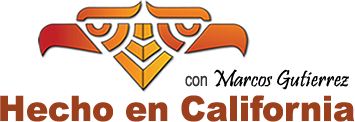El Servicio Meteorológico Nacional alerta sobre posibles inundaciones costeras menores en San Francisco y la Bahía de San Pablo debido al aumento en las mareas astronómicas.
El Servicio Meteorológico Nacional (NWS, por sus siglas en inglés) ha emitido un aviso por inundaciones costeras menores que afecta las costas de San Francisco y la bahía de San Pablo. Este aviso estará vigente desde el jueves 12 de diciembre a las 6:00 a.m. hasta el lunes 16 de diciembre a la 1:00 p.m. Se espera que las mareas astronómicas, un fenómeno natural que eleva los niveles de agua, sean la causa principal de este riesgo.
Te recomendamos
¿Qué son las mareas astronómicas?
Las mareas astronómicas ocurren por la atracción gravitacional de la luna y el sol sobre la Tierra. Este fenómeno puede provocar un aumento significativo en los niveles del agua, lo que representa un riesgo para las zonas costeras al provocar inundaciones en calles, parques y áreas urbanas cercanas al litoral.
Zonas afectadas y duración del aviso
El aviso emitido por el NWS abarca toda la Bahía de San Francisco y la Bahía de San Pablo. Las autoridades han indicado que las inundaciones podrían impactar zonas como parques costeros y calles bajas. Se insta a los residentes y visitantes a tomar precauciones y evitar conducir por áreas inundadas.
El aviso estará en vigor desde el jueves 12 de diciembre a las 6:00 a.m. hasta el lunes 16 de diciembre a la 1:00 p.m., coincidiendo con el periodo en que las mareas astronómicas alcanzarán su punto más alto.
Recomendaciones de seguridad
- Evitar transitar por áreas inundadas o de difícil acceso.
- Estar atentos a posibles cierres de carreteras en zonas vulnerables.
- Proteger estructuras bajas susceptibles a daños por agua.
- Seguir las actualizaciones del Servicio Meteorológico Nacional.
Con las mareas astronómicas afectando los niveles de agua en la costa, es crucial que los residentes de San Francisco y San Pablo estén preparados y tomen medidas preventivas. Las autoridades continuarán monitoreando la situación y brindando actualizaciones. Mantente informado y evita riesgos innecesarios durante este periodo.
Especialista en contenido breaking y evergreen de Estados Unidos para el público latino e inmigrante. Periodista. Diez años de experiencia en medios digitales. Escribe desde Lima. Manejo de idiomas español e Inglés. Especialidad en servicios, bonos y subsidios para audiencias latinas e inmigrantes interesadas en contenido evergreen. Actualmente, redactor y editor de la sección Estados Unidos en el área digital, por encargo del GrupoRPP.




